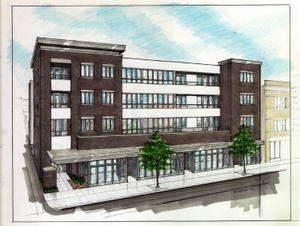Inclusionary Zoning
Inclusionary Zoning Strategy Report
 The purpose of this paper is to analyze the impact of possible inclusionary zoning (IZ) policies in the northeastern Illinois region. This paper will first define inclusionary zoning and review how this housing policy has been implemented in other cities and regions throughout the U.S.. Second, it will explore the existing conditions of affordable housing in northeastern Illinois. Third, it will examine how an inclusionary zoning policy in northeastern Illinois could influence affordable housing development locally and regionally, and evaluate the impacts of these changes for municipalities and the region as whole.
The purpose of this paper is to analyze the impact of possible inclusionary zoning (IZ) policies in the northeastern Illinois region. This paper will first define inclusionary zoning and review how this housing policy has been implemented in other cities and regions throughout the U.S.. Second, it will explore the existing conditions of affordable housing in northeastern Illinois. Third, it will examine how an inclusionary zoning policy in northeastern Illinois could influence affordable housing development locally and regionally, and evaluate the impacts of these changes for municipalities and the region as whole.
This analysis examines various inclusionary zoning policies through a review of literature from various policy organizations, advocacy groups, scholars, and public agencies. Much of the literature speaks to how inclusionary zoning can address affordable housing shortages in high-income communities through requiring a "set-aside" of units, which must meet specific affordability requirements in new residential developments. For example, under a universal 10-percent policy, all new residential developments would have to set-aside 10-percent of the units as affordable. Much of the research on inclusionary zoning examines various existing IZ policies and the results produced within a specific geography.
A sample of findings:
- Inclusionary zoning has the potential for the most benefit in areas with high growth rates, good access to transit and jobs, and little existing affordable housing
- Locating affordable housing near jobs and transit is important because a range of 12 to 15 miles from employment is where increased transportation costs outweigh decreased housing costs (Lipman 2006)
- Contrary to popular belief, studies have shown that the creation of affordable housing and inclusionary zoning policies do not reduce nearby property values, except when the affordable rental housing is located in a concentrated area of poverty (McLean County Regional Planning Commission) (Green 2002)
Download the PDF strategy report. Comments and criticisms are encouraged.
Links
- PDF report
- IZ Panel Discussion - Preliminary Findings Report
- IZ Panel Discussion - Video presentation (The video may be slow to load, depending on the speed of your connection)